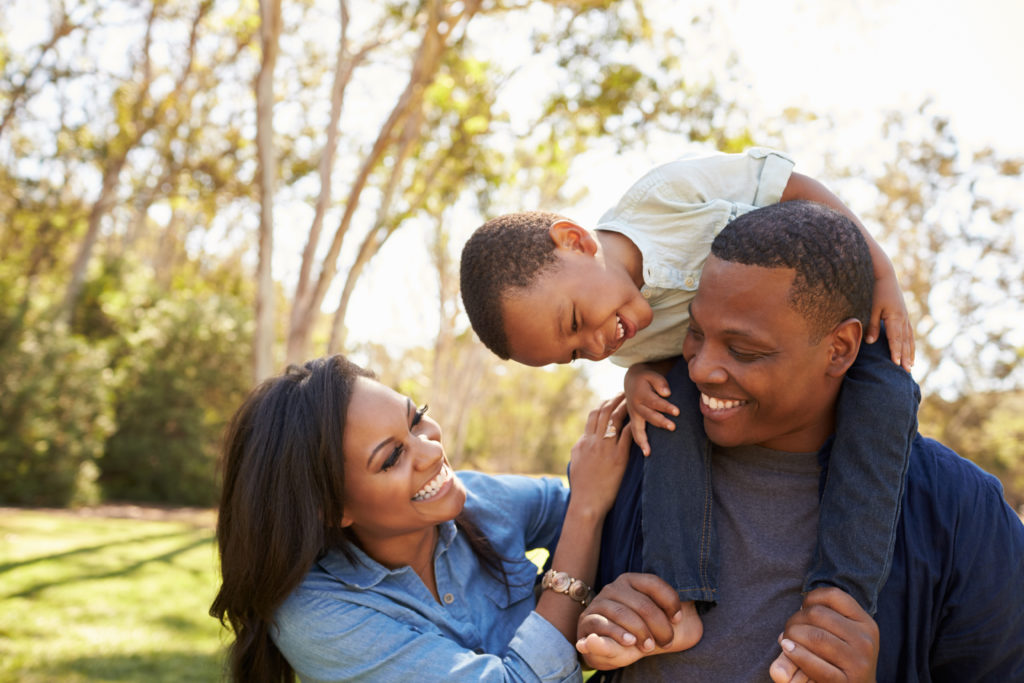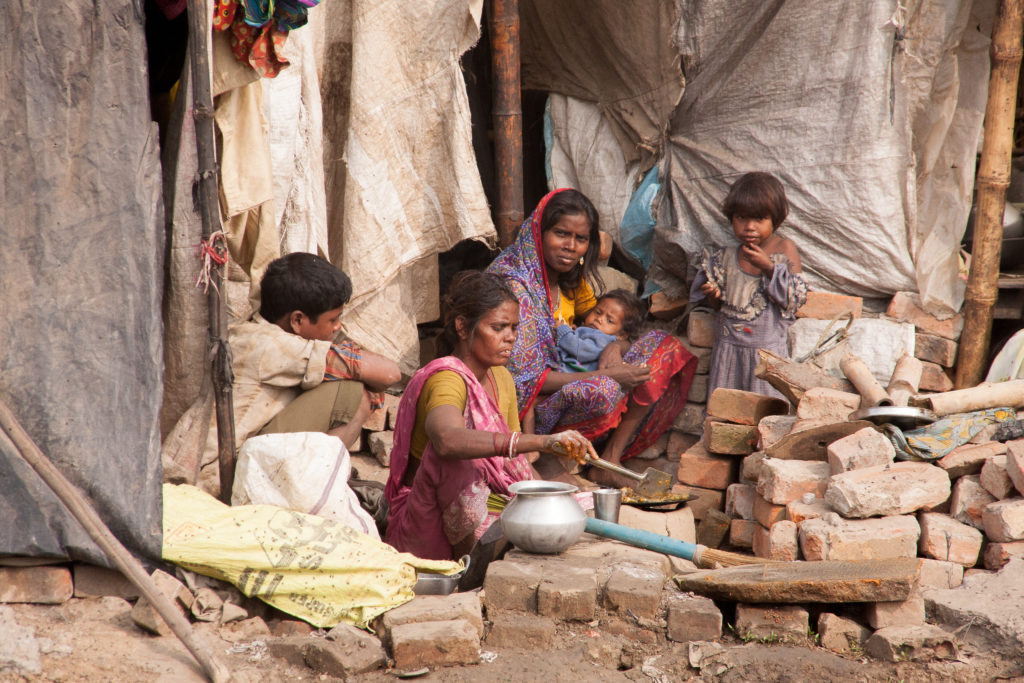All children have the right to grow up in an atmosphere of happiness, love and understanding. Nevertheless, this is not always the case. Challenges linked to violence, poverty and educational limits represent a threat to child development. In these situations, States have the obligation to provide measures of protection and support to children as well as to assist their parents in taking care of them.

The definition of family under the CRC and its connection to children’s rights
According to the United Nations Convention on the Rights of the Child (CRC), the family is “the fundamental group of society and the natural environment for the growth and well-being of all its members and particularly children”. More specifically, the CRC affirms the child’s right to grow up in a safe and nurturing family environment and be cared for by his/her family wherever possible.
In this sense, States have to support families in taking care of their children through economic and social measures which could increase parental skills and, on the other hand, monitor those situations in which children’s well-being and protection are not sufficiently addressed by the parents. In all those cases, children have the right to be protected and the States should intervene guided by the principle of the best interest of the child.
Diverse family structures
The family can be defined as two or more people connected by biology, adoption, marriage, or strong emotional bonds. This is the reason why families can look very different from each other. The most common family structures include (Better Help, 2024):
- Nuclear families: they consist of two parents (usually married or common law) and their children. Nuclear families typically have one or more children; they may be biological or adopted, but the main idea is that the parents are raising their kids together in the family home.
- Same-sex parent families: they are families in which children are raised by single LGBT parents, by an opposite-sex couple where at least one partner is LGBTIQ or by same-sex couples.
- Single-parent families: they consist of one parent with one or more kids. In these cases, the parent is either never married, widowed, or divorced.
- Extended families: they are families with two or more adults who are related through blood or marriage, usually along with children. This often includes aunts, uncles, cousins, or other relatives living under the same roof.
- Stepfamilies/blended families: this is the case when two separate families merge into one. This can go several different ways, like two divorced parents with one or more children blending families, or one divorced parent with kids marrying someone who has no kids.
- Grandparent families: it is when one or more grandparent is raising their grandchild or grandchildren.
- Co-parenting families: it is the process of divorced or separated parents continuing to raise their kid(s) together even after they have separated as a couple. Rather than two parents taking each other to court to gain custody of their children, parents continue to work together in deciding what is best for their children.
- Adoptive families: it is a family that has welcomed a child born to another into their family and legally adopted that child as their own.
- Foster families: foster parents are people who officially take a child into their family for some time, without becoming the child’s legal parents.
- Childless families: they are families with two partners who cannot have or don’t want kids. In the world of family types and dynamics, these families are often forgotten or left out.
Despite the different forms a family could have, it remains the environment which should offer protection, love and support to the child to achieve his/her fullest potential through harmonious development.
Challenges facing families and children
While an atmosphere of happiness, love and understanding should be the natural environment for children to grow up in, this is not always the case. Certain children are at a higher risk of physical and emotional harm than others due to their living circumstances or home environment.
Child abuse and violence
Violence against children affects approximately three-quarters of the world’s children every year and close to 300 million children aged 2 to 4 regularly experience violent discipline by their caregivers. Violence is still widespread in the home environment as it is often seen as an acceptable (or even necessary) approach to teaching children to behave.
On the contrary, research shows that early experiences of violence contribute to a wide range of negative physical, cognitive, developmental, and mental health consequences across the life course and increase the risk of a child perpetrating (boys) or experiencing (girls) violence later in life (Prevention Collaborative, 2024).
On this aspect, it is important to recall the practice of corporal punishment. Based on the most recent data, only 65 States have adopted a full prohibition of corporal punishment in all settings including home, alternative care, daycare, schools, penal institutions and sentences for crimes. Additionally, 27 countries have committed to reforming their laws to enforce a complete ban. Specifically, regarding prohibiting corporal punishment at home, only 66 countries provided a full ban, whereas 133 States still do not prohibit this harmful practice (End corporal punishment, 2022).
Poverty
According to the most recent statistics, in 2022, 24.7 percent of children aged less than 18 in the EU were at risk of poverty or social exclusion (Eurostat, 2023).

Household income, both in terms of salary and welfare benefits, is one of the main determinants of whether a child lives in poverty. Nevertheless, poverty is not just about a lack of money. It is multi-dimensional and one of the principal causes of children’s rights violations in Europe. It is linked to social exclusion and lack of access to services, including childcare, high-quality education and adequate housing. In the case of children, it includes not being able to participate in social and cultural activities with their peers (Save the Children, 2014).
Children from poorer backgrounds may not have the same opportunities as other young people their age. Many will have to work part-time jobs on the side of the school, they may not have access to the same learning materials, or they will miss out on trips with mates because they simply can’t afford it. They have to work harder to overcome the obstacles that modern life puts in front of them.
Living in poor households can make children feel unequal to others. This can then make them less hopeful about getting the job they want. They feel like they have to work twice as hard. Moreover, money worries can push parents to argue more or lose their temper more easily which can amount to a toxic environment for a child (The Children’s Society, 2024). The financial aspect also imposes its consequences on children’s mental health: the lack of money to pay for psychological therapy, or the distance from the services could be an additional challenge to seeking adequate support.
Educational barriers
Parents play a crucial role in their children’s education, serving as their first and most influential teachers. Research has shown that parental education is a consistent predictor of offspring school achievement and also of academic attainment, physical health, mental health and cognitive abilities (Tamayo Martinez et al., 2022).
In this sense, the lack of education among parents has a significant impact on their ability to nurture their children. Parents with low education levels are more likely to be unable to provide sufficient support to their children in terms of schoolwork.
In contrast, highly educated parents have a higher likelihood of being able to provide adequate support. According to the most recent statistics, in 2022, in the EU, 10.2 percent of children aged less than 18 whose parents’ level of education was high were at risk of poverty or social exclusion compared with 61.9 percent of children whose parents’ level of education was low (Eurostat, 2023).
Legal protections and gaps
To prohibit violence, some countries have undertaken constitutional reforms, while others have introduced new provisions in family and criminal codes, child protection and domestic violence legislation. It is important that the legal prohibition is supported by detailed provisions in specific pieces of legislation, both to address distinct forms of violence, such as sexual abuse and exploitation, trafficking or harmful traditional practices and to tackle violence in specific settings, including schools, care and justice institutions and the home (UN, 2024).
Some countries have introduced a general prohibition on violence against children, such as Austria, Ireland, Mongolia, Kenya, Laos, Peru and Sweden. In particular, Sweden was the first country to introduce an explicit prohibition of disciplinary corporal punishment of children by their parents in 1979. Ireland introduced a prohibition for all forms of corporal punishment of children in 2015 (UN, 2024).
Despite some changes that have been implemented in the last years, a lot still needs to be done. At a minimum, laws have to set boundaries for the social and legal tolerance of violence in every country, investments need to be directed towards interventions that will reach the largest number of children wherever they are and prevent multiple forms of violence as well as progress needs to be monitored regularly (World Vision, 2019).
Solutions and interventions
Family can be a nurturing environment for children, but it can also present serious challenges and threats to child development.

As regards violence against children, it is important to ensure that legal frameworks prohibit all forms of violence against children as well as to provide access to quality response services for children affected by violence. A change in cultural attitudes and practices that support the use of violence is needed along with eliminating the cultural, social, and economic inequalities that contribute to violence (Prevention Collaborative, 2024).
All these aspects also contribute to the eradication of child poverty and to improving children’s access to education. Community-based parent support programs are key to supporting parents in raising their children and developing their parenting skills (Trivette et al. 2014). On the other hand, professionals in the field of social work who are in contact with children should be trained in identifying potential threats and supporting families.
In all the situations in which children may not have access to services and support, States have the obligation to intervene to ensure adequate support to not leave anyone behind. In the common goal of supporting children’s development and well-being, all actors are called to play their roles.
In addition, civil society organizations (CSOs) are key to supporting interventions and activities for children, in most cases, complementing the State in providing services made to develop children’s social, relational, physical and emotional skills. NGOs are also essential to developing pilot projects and gathering best practices which can influence future policy recommendations.
Written by Arianna Braga
Last updated on 29 March 2024
References:
End corporal punishment (2022). Progress. Retrieved from End corporal punishment at: https://endcorporalpunishment.org/countdown/, accessed on 07 March 2024.
Eurostat (2023). Children at risk of poverty or social exclusion. Retrieved from Eurostat at https://ec.europa.eu/eurostat/statistics-explained/index.php?title=Children_at_risk_of_poverty_or_social_exclusion#:~:text=Children%20aged%20less%20than%2018%20years%20growing%20up%20in%20poverty,and%20socially%20excluded%20as%20adults., accessed on 29 March 2024.
GOV.UK (2024). Child adoption. Retrieved from GOV.UK at https://www.gov.uk/child-adoption/birth-parents-your-rights, accessed on 7 March 2024.
Prevention Collaborative (2024). Violence against children at home. Retrieved from Prevention Collaborative at https://prevention-collaborative.org/about-violence/violence-against-children-at-home/, accessed on 29 March 2024.
Save the Children (2014). Child Poverty and Social Exclusion in Europe: A matter of children’s rights. Retrieved from Save the Children at https://resourcecentre.savethechildren.net/pdf/child-poverty-and-social-exclusion-in-europe-low-res.pdf/, accessed on 29 March 2024.
Tamayo Martinez N. et al. (2022). Double advantage of parental education for child educational achievement: the role of parenting and child intelligence. Retrieved from the European Journal of Public Health at https://academic.oup.com/eurpub/article/32/5/690/6585034, accessed on 28 March 2024.
The Children’s Society (2024). What are the effects of child poverty? Retrieved from The Children’s Society at https://www.childrenssociety.org.uk/what-we-do/our-work/ending-child-poverty/effects-of-living-in-poverty, accessed on 28 March 2024.
Trivette C. M. et al. (2014). Community-Based Parent Support Programs. Retrieved from Encyclopedia on Early Childhood Development at https://www.child-encyclopedia.com/parenting-skills/according-experts/community-based-parent-support-programs, accessed on 29 March 2024.
UN (2024). Legal ban on violence against children. Retrieved from UN Special Representative of the Secretary-General on Violence Against Children at https://violenceagainstchildren.un.org/content/legal-ban-violence-against-children, accessed on 2 April 2024.
UNICEF (2021). Every child has the right to grow up in a safe and nurturing family environment. Retrieved from UNICEF at https://www.unicef.org/thailand/press-releases/every-child-has-right-grow-safe-and-nurturing-family-environment, accessed on 28 March 2024.
World Vision (2019). Small Cracks, Big Gaps: How governments allow violence against children to persist. Retrieved from Relief Web at https://reliefweb.int/report/world/small-cracks-big-gaps-how-governments-allow-violence-against-children-persist, accessed on 2 April 2024.

